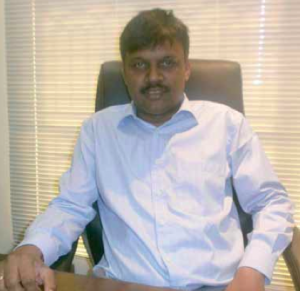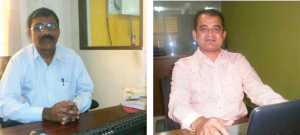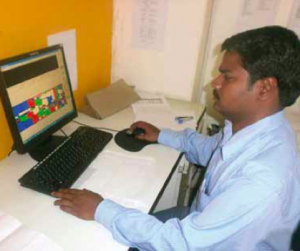 Arvind Ltd., the third largest producer of denim in the world, also
Arvind Ltd., the third largest producer of denim in the world, also
specializes in finished denim garments for major international brands
and its own local labels. Manufacturing at multiple sites in
Bangalore, Arvind currently exports more than 600,000 units per month.
Its manual processes, however, have been counterproductive to the
company’s growing success, causing delays, production errors, and
waste.
To improve operations, increase production capacity, integrate
process, save materials and enhance productivity, Arvind chose to
implement Lectra’s Optiplan cut order planning solution alongwith
Lectra’s DiaminoFashionExpertPro marker-making solution.
Arvind now enjoys all the benefits of automated processes as well as
Lectra’s shared expertise. Lectra’s automated development and
production solutions have enabled the company to meet its challenges
faster and more effectively.
Arvind was facing significant challenges in cutting room planning at
its various sites. Excess fabrics and fabric shortages were causing
major inefficiencies in production. Organization of cutting order was
not optimized, leading to wasted time and resources.
The company came to Lectra, seeking to improve the operations level,
increase efficiency, reduce material consumption and enhance
productivity in various departments by using sophisticated technology,
ideally through creation of a centralized cutting facility.
The solution
Lectra’s business specialists carried out a process analysis of
Arvind’s manufacturing processes. They studied the existing methods
used and detected production bottlenecks. After a thorough evaluation,
Lectra proposed an integrated solution, including the
DiaminoFashionExpertPro marker-making software and Optiplan Expert
cutting room planning software, which would be a powerful complement
to a new centralized cutting facility. “We are extremely happy with
the support received and the quality of the partnership developed with
Lectra,” says Mr. Ashish Kumar, Arvind’s CEO.
Uncentralized planning and inefficiencies
Before acquiring Lectra, Arvind was working with a manual planning and
marker-making system at its various sites, with each production site
handling its own cut-order planning separately. With the arrival of
each customer order, individual operators would input production order
information into separate Microsoft Excel files. The corresponding
marker combinations would be drawn up by the operator as well, often
estimated from similar markers used previously.
 Meanwhile, Arvind’s fabric laboratories would estimate the amount of
Meanwhile, Arvind’s fabric laboratories would estimate the amount of
fabric needed for each order based on approximations of markers, and
they would ship the amount of fabric to the production site according
to their calculations.
One operator in each production site would then plan the cut order
according to the fabric delivery and the printed-out Excel sheets. The
system was time-consuming and prone to error, and it was heavily
reliant on guesswork and approximated estimations. The lack of
automation throughout the manufacturing chain meant that nearly the
entire process had to be performed manually. The result was sometimes
too much fabric, sometimes not enough, halted production, unused
cutting machines, last-minute outsourcing to other companies, and, in
an effort to get the best product yield from excess fabric, thousands
of overstocked jeans that ended up getting stored in the warehouses
and occasionally sold to employees at cost.
Lectra’s cutting room combination
Lectra’s solutions specialists evaluated Arvind’s process and
concluded that the company should plan and optimize production orders
centrally using Lectra’s Optiplan Expert in combination with its
automatic marker system, DiaminoFashion. The amount of fabric
necessary for each order was reduced, and the amount of fabric ordered
became precise – a two-way gain on fabric use, with waste dropping to
a strict minimum. Furthermore, overstocks were eliminated, meaning 100
per cent of the products were being delivered to customers for profit.
In addition, the powerful combination of DiaminoFashion with Optiplan
Expert meant that Arvind was able to maximize efficiency based on
expert planning that takes markers, orders and fabric availability
into consideration. Through Lectra’s solutions, Arvind was able to not
only see each marker individually, but see whole sets of markers that
are necessary to produce an order, allowing them to optimize cutting
order and planning as well as fabric consumption.
 Having implemented Lectra’s solutions, Arvind became integrated,
Having implemented Lectra’s solutions, Arvind became integrated,
automated, and transparent with a fully centralized, efficient
process. With a 2% gain in fabric plus the elimination of overstocks –
and calculated fabric savings of up to $850,000 a year – the company
considers Lectra’s solution to be the most efficient in the industry.
It’s also one of the most user-friendly, according to Arvind’s CAD
Manager, Mr. Anil Kumar. “The implementation was done smoothly.
Lectra’s solutions are quick to learn and easy to work with”, he says.
Optiplan, a true control tower
Optiplan Expert has helped Arvind change the ratio planning from
manual to automatic. They are able to generate a detailed print report
of section planning and fabric details for production.
Optiplan has facilitated Arvind’s ordering and fabric stocks by
providing precise instructions at each step of the planning process.
This has helped optimize the process and enabled the company to share
information among multiple production sites.
“Optiplan has significantly improved the organization and efficiency
of our cutting room operations,” says Mr. Ashok Chandru, head of
operations, systems and process control.
Excellent support
Lectra’s expert solutions specialists have accompanied Arvind’s
evolution every step of the way with constant advice, support and
knowledge. Their industry experience, combined with a keen
understanding of Arvind’s unique needs and the efficacy of their
training and implementation, has helped Arvind adjust to its new
system with ease.
“The integration of Lectra’s technology into our processes plays a
major role,” says Mr. Ashish Kumar. “It enables us to reduce fabric
consumption in marker planning and significantly improves the
organization and efficiency of our operations.”